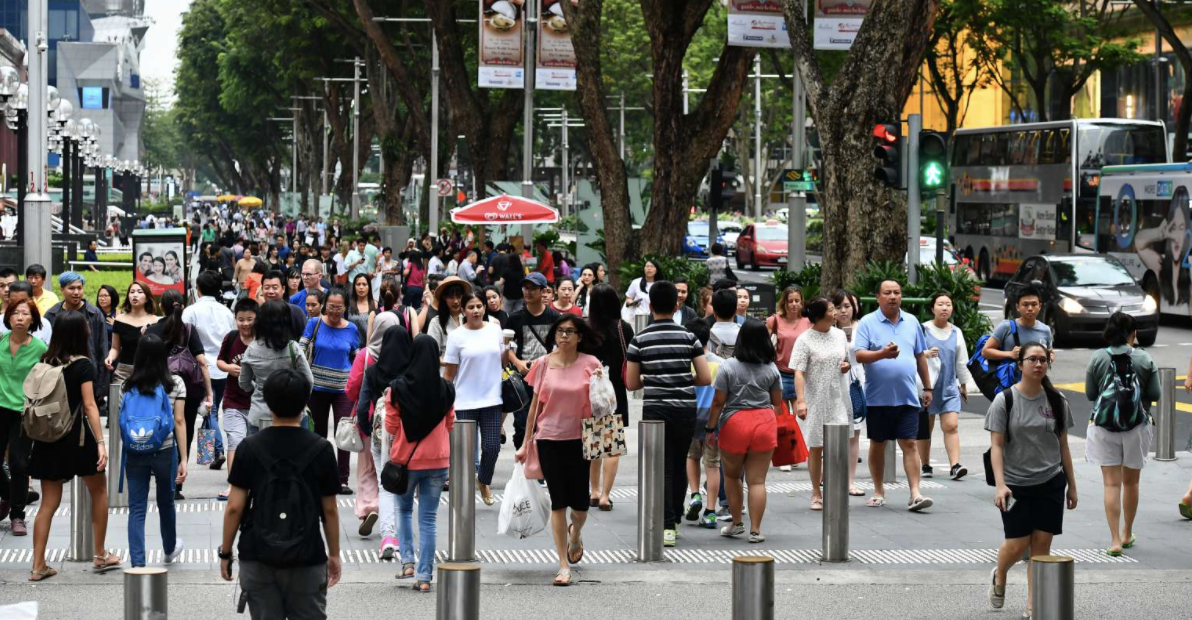Winning in the rebound
news
In the Press
Published by
Alex Zhang
Date
08/10/2021
Consumer attitudes and behaviours have drastically changed in the past 18 months. And the old ways and old days of consumer segmentation need a serious refresh to take this into account.
The strategic minds at VCCP have sought to map the varied impact of the pandemic, and identify the indicators that will ensure brands are much more attuned to the mood and mindset of their consumers.
What emerged was five distinct consumer segments, with the potential to display markedly different behaviours in 2021 and beyond. Our finding was that psychology will be of equal importance as financial circumstance in predicting the spending behaviours of each segment.
Here’s a snapshot of the new post-COVID consumer segments that VCCP has identified – and the brands that are effectively tapping into them in Asia.
Revenge spenders
This is the group that obviously seems the most attractive. With lots of spare cash and chomping at the bit to make up for a lost year, they are looking for a release and won’t mind spending to achieve it. We predict they will move their spending away from pandemic beneficiaries such as Amazon and food delivery companies because they want to get away from behaviours associated with the bad times. Revenge spenders will provide rich pickings from brands offering experiences, indulgences and escapes.
In Asia, revenge spenders have been indulging longer than their Western counterparts. The cruise lines in Singapore have already benefited with their premium suites sold out until the end of the year.
The luxury sector – one thought to be in long-term decline – saw the flagship Guangzhou Hermes store in China reportedly haul in $2.7 million dollars in sales on a single day in its reopening.
LVMH group saw a record first half year earnings in 2021, with revenue up 53% compared with 2020. Even excluding the pandemic year of 2020, the performance is still a record high compared with pre-pandemic years. Again, this was largely driven by revenge spenders in Asia, particularly China, where 40% of the group’s revenue is derived.

Source: LVMH Revenue, LVMH, Vogue Business.
Resetters
Resetters, on the other hand, will take a much less hedonistic approach to the post-pandemic situation. Resetters may have already had an existing predisposition to “reset” their behaviour before COVID-19, and the pandemic has simply accelerated and scaled up their intentions to affect a major reset of their previous consumer attitudes and behaviours.
They are conscious to address over-consumption, pollution, family stress, and care for the future of the planet. Resetters will make buying decisions based on brand purpose, impact on the planet, and supporting local communities.
As the stalwart of Indonesian connectivity – servicing more than 160 million Indonesians – Telkomsel had already broadened its services beyond connectivity into music and video streaming, eSports and games, and enterprise services.
But with the magnitude of the impact of COVID-19 on Indonesians, Telkomsel demonstrated its commitment to the nation by further expanding into more vital community services, including e-health services, to provide quality healthcare to remote Indonesia; and e-learning vocational programmes for those needing new skills to become employable in the pandemic. According to Telkomsel CMO Rachel Goh: “It was the perfect timing for the rebrand.”
The resetters will rally around Telkomsel’s refreshed brand purpose of enabling the lives of each and every Indonesian. And they will find everyday value in the variety of digital services they can now access through Indonesia’s only home-grown telco – Telkomsel.

Rationers
Rationers are the ultimate pragmatists of Asia. They have survived COVID-19 by being conservative with their spending and have a surplus of savings. They’ve probably been through tough times in the past, so will be in no hurry to burn through their savings. They probably look after older parents or young adult children and have been stringent about following government guidelines through COVID. They want to see brands retaining a responsible approach to safety and community.
The most pragmatic segment of all, regardless of perhaps accumulating more savings from the lockdowns, they still seek to preserve wealth – having probably experienced multiple periods of uncertainty in the past.
This is the segment most likely to economise their life, such as reducing phone data plans because of increased time at home. Singtel sought to counter this by offering complimentary COVID-19 coverage with any prepaid top-up for a limited time.
DBS also offered a complimentary COVID-19 insurance scheme to its customers in 2020. With a million sign-ups, the bank reintroduced the scheme again in early 2021. By responding with a responsible and sensible approach to appeal to their more essential needs, brands can unlock spending from the pragmatic rationers.

Source: Singtel offers complimentary COVID-19 insurance with prepaid top-up, 2020.
Rewarders
This segment may not have much money to spend, but will do what they can to make life as enjoyable as possible post-lockdown. Rewarders are life’s optimists, seeking out everyday treats. They know life is tough, but they focus on small rewards and the pleasure of family and friends. They look to brands that offer everyday affordable escapism.
The airline industry is one of the unquestionable casualties of the pandemic. With flying still out of the question for many because of health concerns and restrictions, Cathay Pacific pivoted to broaden its brand offerings. Stretching beyond flights into hotels, retail, dining and wellness, Cathay Pacific created “Cathay” – a premium lifestyle travel brand starting in Hong Kong.
Through partnerships and new offerings, Cathay can maximise its brand and offerings to more people. Especially rewarders, who may not have the economic means to fly now, but can still enjoy refreshed rewards under the premium Cathay brand.
A Michelin dinner may not be a vacation abroad, but can still offer a night of escapism with friends.

Recovering
This group already existed before COVID-19, consisting of long-term unemployed, low paid, part-time employed and those with long-term illness. However, this segment has grown during the pandemic to include those people made redundant from the hospitality, tourism, retail and services sectors.
This segment has been the most adversely impacted by the pandemic. They are looking to their governments and brands to rebuild a future that offers benefits to all. This segment has the potential to rebound, but it will be slower, and may be the most important indicator of true national recovery.
Within this recovering segment is a group literally driving recovery – truck drivers. While they managed to keep economies moving and communities and countries connected, they have been facing more than just health-related dangers on the roads.
New road regulations and checkpoints, more stringency on cleanliness, and more regulations around loading and unloading all mean more downtime. And decreased loads in many cases have all meant that truckers are working harder with longer hours, yet for less pay.
Truckers have displayed an inordinate amount of resilience on the front lines, yet still suffer from negative economic impacts of the pandemic in Asia.
Shell Rimula responded with the Road to Recovery campaign. A message of solidarity to recognise and champion those in the transport industry.
Beyond just an advertising campaign, Shell Rimula offered three pillars of tangible assistance: Go Safely – to minimise chances of infection; Go Further – superior products that increased truck performance to minimise downtime; and Get Savings – tangible savings on the essential truck engine oils.

So, as life slowly gets back to normal, brands will have to navigate a much more complex consumer psychology; shaped not only by economics, but also by the emotional impact the pandemic has had on them.
In messaging, brands might have to look for new psychological and emotional contexts to use as targeting cues. And most importantly, the ways brands present themselves may need to tread a fine line: sensitive to the situation of the recovering and the bunker mentality of the rationers, while benefiting from the exuberance of the revenge spenders.


